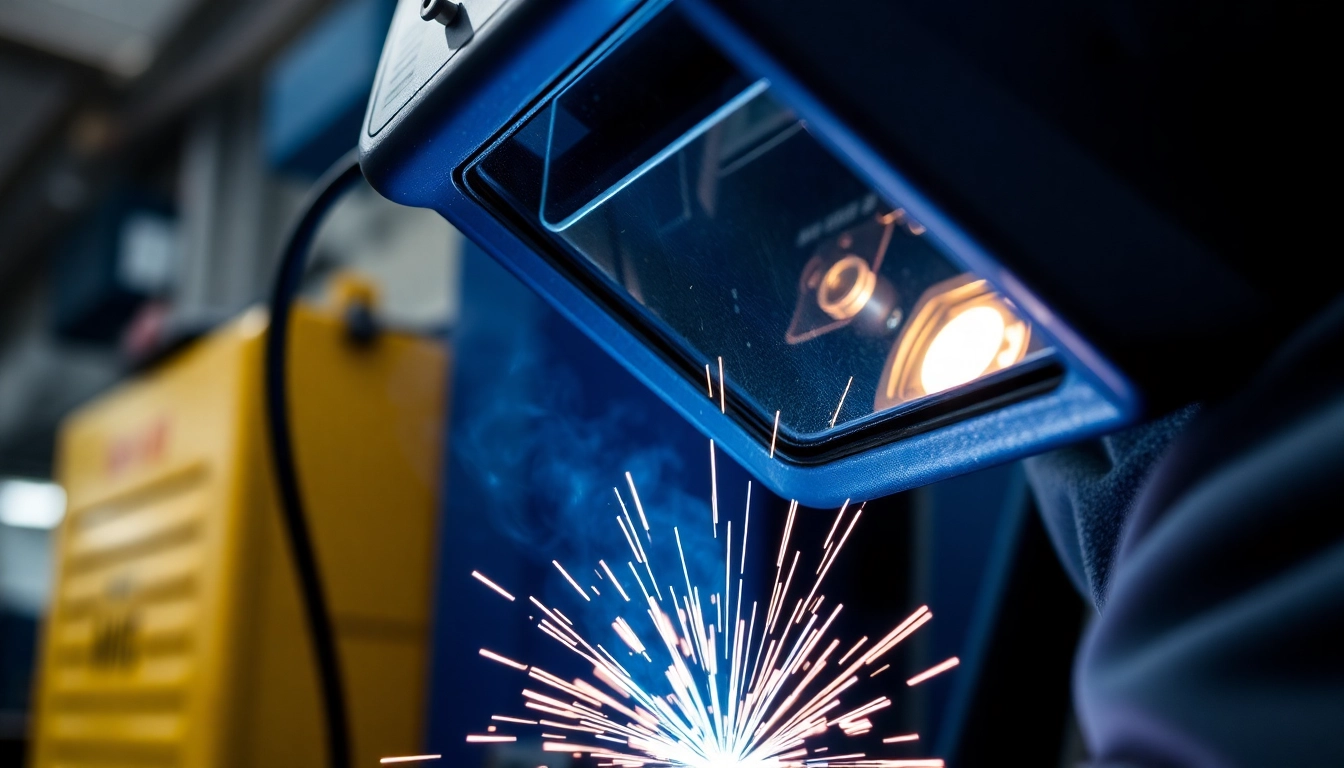Understanding AC DC TIG Welders
Definition and Functionality
TIG welding, or Tungsten Inert Gas welding, is a precise method ideal for welding thin materials and creating strong, high-quality joints across a variety of metals. The ac dc tig welder stands out in this field by offering both alternating current (AC) and direct current (DC) modes. This versatility allows welders to work on more materials than a TIG welder limited to just one current type. AC is typically used for non-ferrous metals like aluminum, producing a cleaning action essential for achieving a strong weld in oxidized materials. In contrast, DC is often the preferred choice for ferrous metals such as steel, providing deeper penetration and a simpler, more stable arc.
Benefits of Using AC DC TIG Welders
The dual functionality of AC DC TIG welders presents numerous advantages for both hobbyists and professional welders:
- Versatility: Capable of welding various materials including aluminum, stainless steel, and copper.
- High-Quality Welds: Produces clean, aesthetically pleasing welds that require minimal finishing.
- Precision Control: Offers fine control over the welding process, allowing for intricate work.
- Efficiency: Dual settings enable quick switching between AC and DC to accommodate different tasks.
Key Components and Specifications
Understanding the key components of an AC DC TIG welder is critical for proper usage and maintenance:
- Power Source: Determines the type of current (AC or DC) and its output level (measured in amps) suitable for the material.
- Torch: Combines the electrode and nozzle, essential for focusing the arc and shielding gas.
- Cooler: Keeps the welder at optimal temperatures to prevent overheating during prolonged use.
- Foot Pedal: Allows for hands-free control over the amperage while welding, enhancing precision.
Choosing the Right AC DC TIG Welder
Considerations for Your Projects
Selecting the right AC DC TIG welder begins with a clear understanding of your specific needs. Consider the following:
- Material Type: Assess the materials you will be working with. Aluminum requires AC settings, while steel generally prefers DC.
- Thickness of Materials: Choose a welder with the appropriate amp rating to handle the thickness of your workpieces.
- Portability: If you need to move your welder frequently, look for portable models with lightweight designs.
- Frequency of Use: Consider how often you will be using the machine. A heavier-duty welder may be required for daily use compared to occasional projects.
Top Brands and Models
Top brands in TIG welding offer models that cater to both amateurs and professionals. Some popular brands include:
- Miller Electric: Known for reliability and high performance. Models like the Miller Dynasty series are popular for their versatility.
- Lincoln Electric: Offers robust solutions like the Lincoln Precision TIG series, favored for their user-friendly interface.
- Everlast: Provides a range of affordable yet effective TIG welders that cater to budget-conscious users.
Price Ranges and Value Assessment
The price of AC DC TIG welders varies depending on features, capabilities, and brand. Entry-level machines can start around $500, suitable for hobbyists. Professional-grade welders can exceed $3,000, but they typically offer advanced features, better duty cycles, and longer warranties. When assessing value:
- Consider warranty options.
- Evaluate included accessories, such as foot pedals and torches.
- Look for customer reviews to gauge performance and reliability.
Best Practices for TIG Welding
Preparation and Setup Steps
Proper preparation is vital for achieving the best welding results:
- Clean Your Materials: Remove all contaminants including oils, rust, and oxides from the surfaces to be welded.
- Select the Right Filler Material: Ensure you use a filler rod compatible with the base metal.
- Set Your Machine Correctly: Adjust the amperage and settings based on the material thickness and type.
- Check Gas Flow: Ensure your shielding gas is flowing correctly to prevent contamination of the weld.
Techniques for Effective Welding
Utilizing proper techniques can significantly enhance the quality of your TIG welds:
- Maintain a Steady Hand: Keep a consistent distance between the tungsten and workpiece. Aim for a distance of around 1/8 inch.
- Control Heat Input: Adjust your amperage based on material thickness to prevent burn-through or warping.
- Practice Proper Travel Speed: Your speed determines the penetration and width of the bead; too fast may create weak welds, while too slow can lead to excessive heat build-up.
Common Mistakes to Avoid
Even experienced welders can encounter challenges. Avoid these common mistakes:
- Neglecting Cleanup: Failure to clean base metals prior to welding can lead to weak joints and contamination.
- Incorrect Amperage Settings: Using too high or low amperage for your material can result in poor quality welds.
- Poor Post-Weld Treatment: Inadequate cooling and handling can affect the integrity of the weld.
Maintenance and Care for AC DC TIG Welders
Regular Maintenance Routines
Maintaining your AC DC TIG welder will extend its lifespan and ensure optimal performance. Follow these maintenance routines:
- Inspect Connections: Regularly check hoses, cables, and connectors for wear or damage.
- Clean the Torch: Ensure the torch is clean and free from debris to maintain gas purity.
- Replace Consumables: Periodically check and replace tungsten electrodes and gas lenses as needed.
Cleaning and Storage Tips
Proper cleaning and storage practices are crucial for the longevity of your equipment:
- Keep the Workspace Clean: Maintain a clutter-free area to avoid accidents and damage to the equipment.
- Store in a Dry Place: Moisture can lead to rust and corrosion; ensure your welder is dry before storage.
- Use a Cover: Protect your welder from dust and debris when not in use.
Identifying and Troubleshooting Common Issues
Knowing how to troubleshoot common problems can save time and improve efficiency:
- Inconsistent Arc: Check for loose connections or inadequate gas flow.
- Poor Penetration: Ensure you’re using the correct amperage for the thickness of the material.
- Overheating: Verify that you’re not pushing the welder beyond its duty cycle.
Maximizing Your TIG Welding Efficiency
Upgrading Equipment and Accessories
Investing in the right equipment and accessories can vastly improve your welding efficiency:
- Foot Pedals: Enhance control over the welding process.
- High-Quality Torches: Offer better heat control and longevity.
- Gas Flow Meters: Help you monitor gas usage for more efficient welding.
Utilizing Technology in Welding
Modern advancements in technology can streamline the welding process:
- Digital Displays: Allow for easier settings adjustments and monitoring.
- Automated Feeders: Smoother transitions for filler materials during the weld process.
- Welding Apps: Use mobile applications to calculate settings and troubleshoot issues on-the-go.
Learning Resources and Training Opportunities
Continuing education is vital for staying current in welding techniques and safety:
- Online Courses: Look for courses that focus specifically on TIG welding techniques and best practices.
- Workshops: Attending hands-on workshops can provide practical experience and personalized guidance.
- Certification Programs: Consider certified programs for additional credentials that can enhance your career prospects.



